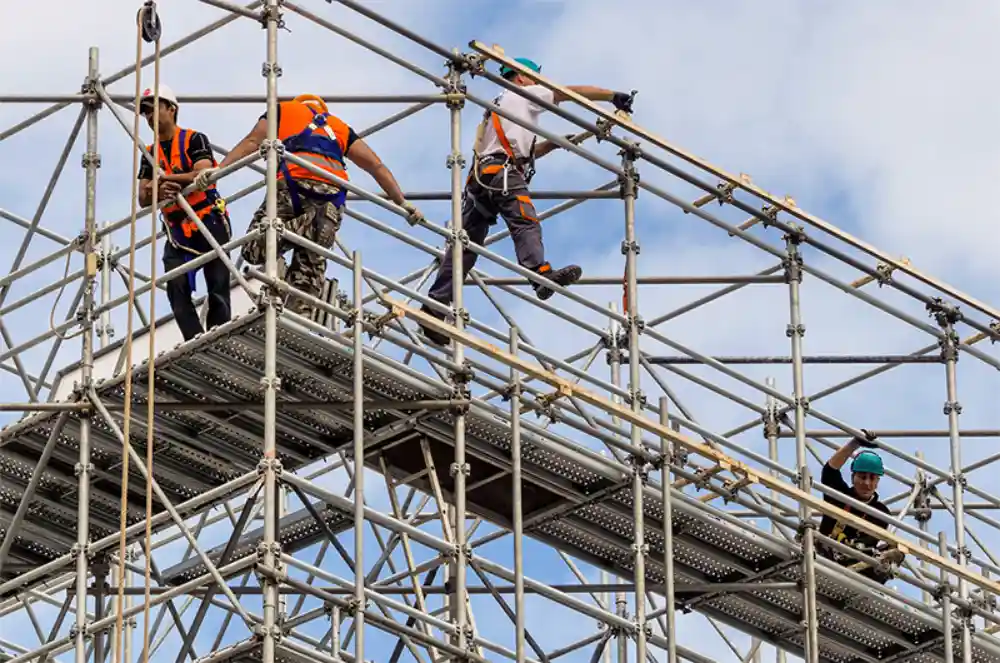Weathering Steel Applications

Introduction to Weathering Steel and Its Unique Properties
Weathering steel, commonly known by the trademark COR-TEN steel, is a high-strength, low-alloy steel designed to develop a stable, rust-like appearance after exposure to weather. Unlike regular steel, which corrodes and weakens over time, weathering steel forms a protective oxide layer that adheres tightly to the surface, preventing deeper corrosion. This unique property eliminates the need for painting or coating, significantly reducing maintenance costs.
The steel’s alloy composition, including elements like copper, chromium, nickel, and phosphorus, enhances its resistance to atmospheric corrosion. Over time, the steel surface develops a rugged patina that blends aesthetically with natural and urban environments. Weathering steel’s durability and visual appeal have made it a popular choice for various architectural, structural, and artistic applications, especially in outdoor and exposed environments.
Common Applications of Weathering Steel in Construction
Weathering steel is widely used in construction projects requiring long-lasting, low-maintenance, and visually distinctive materials. Its primary applications include bridges, where its corrosion resistance ensures structural integrity under harsh weather conditions while minimizing upkeep. Many landmark bridges worldwide feature weathering steel girders and supports.
In architectural design, weathering steel is favored for façades, cladding, and decorative elements, providing buildings with an industrial yet organic look. Its ability to age gracefully makes it ideal for museums, cultural centers, and commercial complexes aiming for a modern, natural aesthetic.
Other common uses include retaining walls, noise barriers along highways, and outdoor sculptures. Weathering steel is also utilized in infrastructure such as railway freight cars, shipping containers, and utility poles, benefiting from its strength and reduced maintenance needs.
Benefits of Using Weathering Steel in Projects
The key benefits of weathering steel revolve around its durability, aesthetics, and cost efficiency. By naturally forming a protective rust layer, it requires little to no painting or corrosion protection, cutting down long-term maintenance and lifecycle costs significantly. This makes it especially attractive for projects in remote or hard-to-access locations.
Its unique patina not only protects but also provides an appealing, warm color that changes over time, adding character to structures without artificial treatments. Weathering steel’s high tensile strength allows for lighter structural designs, contributing to material savings and easier handling during construction.
Environmental benefits include the steel’s recyclability and the elimination of harmful coatings, reducing environmental impact throughout the building’s lifespan. These advantages make weathering steel an excellent choice for sustainable construction practices.
Challenges and Considerations in Weathering Steel Usage
Despite its advantages, weathering steel presents some challenges and limitations. The initial rusting process can cause runoff staining on adjacent surfaces, which might be undesirable in certain architectural contexts. Designers must plan for water drainage and runoff management to prevent discoloration of surrounding materials.
Weathering steel performs best in environments with alternating wet and dry cycles. In consistently wet, humid, or marine environments, the protective patina may not stabilize properly, leading to accelerated corrosion. This limits its suitability for certain coastal or submerged applications.
Installation requires attention to detail to avoid trapped moisture and ensure proper exposure for patina formation. Welding and fabrication processes also need specialized techniques to maintain corrosion resistance.
Overall, with careful design and environmental assessment, weathering steel can provide durable, attractive, and cost-effective solutions in many construction and infrastructure projects.





